Montréal at KLEX
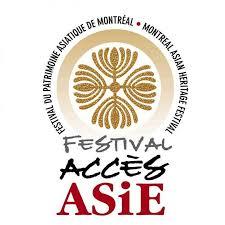
Curated by Fabrizio Gilardino
Presented by Khosro Berahmandi and Fabrizio Gilardino
Montréal at KLEX is part of a joint/exchange project between Montréal-based Festival Accès Asie and KLEX; following the screening of a programme of Asian shorts (KLEX in Montréal), selected by KLEX’s director, Kok Siew-Wai, that have been presented during the 2019 edition of the Canadian festival—at la lumière collective in Montréal on 10 May—it now features this programme that I had the pleasure to curate and that presents here in Kuala Lumpur recent videos from six Montréal-based Asian-Canadian authors.
Accès Asie is a multidisciplinary art festival that takes place annually in Montréal in order to celebrate Asian Heritage Month. The festival presents, promotes and disseminates the work of Asian-Canadian artists and has recently started to reach out internationally, establishing partnerships with various Asian festivals.
Montréal at KLEX offers a rather broad facet of contemporary Canadian experimental video production. Some of the featured authors seem more sensitive to issues that refer to their uprooting / emigration / social reintegration experience—particularly in the case of Jin-young Kim, whose experience of immigration to Canada during her youth fostered her motivation to create artworks that express perspectives on displacement, both her own and others, or Pavitra Wickramasinghe, whose video Last Syllable of Time was shot during her “second visit to the country where I grew up in twenty years. While I had clear memories of where I’m from, it is of course very different from reality and I was moved to see it with the eyes of an adult.”
Internationally renowned animator Alisi Telengut presents a stunning animation short in which three different landscapes are captured with digital photography: original paintings of nature with oil pastel and real plants, miniature sets of forests with partial artificial materials, and segments in a real forest. Hadi Jamali questions himself on the notion of destination in a short and almost hypnotic, minimalist video, while Ivetta Sun-young Kang’s short was created through visual superimpositions that retransformed its initial footage into a kaleidoscopic, quasi-psychedelic and colourful visual meditation.
Finally, the last video of the programme, a collaborative effort from French-born Vietnamese dancer/choreographer Kim-Sanh Châu and Ho Chi Minh-based Canadian cinematographer Ray Lavers, is a staggeringly beautiful piece of video-dance shot in rural Northern Vietnam, and inspired by the Vietnamese cult of the dead culture.
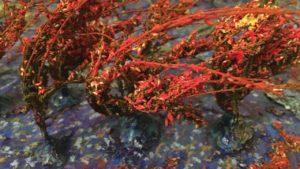
Long Live Forest (2019)
5:00 mins
Alisi Telengut (Mongolia/Canada)
Three different landscapes are captured with digital photography: original paintings of nature with oil pastel and real plants, miniature sets of forests with partial artificial materials, and segments in a real forest. After Modernity, nature was seen as a mere static object drastically distinguished from culture. But today, nature (from the natural world, forest, water and so forth), and culture (man-made, artificial, human activities and so forth) are not ontologically divided anymore. They could be seen as a continuum, a dialectic, and a hybrid in a holistic way.
Alisi Telengut is a visual artist, animator, and filmmaker based in Montréal and Berlin. She creates animation frame by frame under the camera, with painting as the medium, to generate movement and explore hand-made and painterly visuals for her films. Her recent works received multiple international awards at festivals such as Stockholm Film Festival and Montréal World Film Festival. In addition to being screened at Sundance, Slamdance, TIFF, AFI, and various worldwide exhibitions as animation and moving image artworks, these films have also contributed to enthnographic and ethnocultural research archives. She’s currently pursing her PhD research at Filmuniversität Babelsberg Konrad Wolf in Potsdam, Germany.
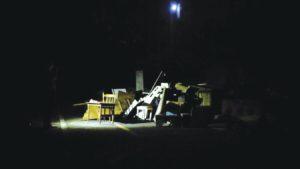
Leave Me Don’t Leave Me (2019)
11:25min
Jin-young Kim (South Korea/Canada)
An elusive figure collects and accumulates a pile of objects at night, and that becomes a site for a sentimental ritual.
Jin-young Kim uses time-based media to create her works. Kim’s experience of immigrating to Canada during her youth fostered her motivation to create artworks that express perspectives on displacement, both her own and of others. Kim finds herself located between two realities — one in Canada and the other in South Korea, and Kim’s projects are often a bridge that connects the two homes that she grew up in. Her photographs and videos combine documentary and fiction in order to form metaphoric narratives that deal with questions of identity, sense of belonging, and relationship between place and self. Most recently, she had exhibited at Hamilton Artists Inc. in Hamilton, Ontario, Maison de la Culture Claude-Lévéillée, FoFA Gallery and Patrick Mikhail Gallery in Montréal, and Esplanade Arts and Heritage Centre in Medicine Hat, Alberta. She has obtained her BFA from OCAD University in Toronto, and her MFA from Concordia University in Montréal.

The Marathon of Remaining (2015)
2:05 mins
Hadi Jamali (Iran/Canada)
The Marathon of Remaining is a single-channel video portraying the profound dilemmas facing people in their daily life routines. In an extremely wide escalator, stairs are moving down. Some people are trying to come up against the way the stairs move. They make a desperate effort to be in the upper part of the stairs, but by getting there they stop or slow down their walking speed and let the escalator carry them down. It seems no one wanted to leave the escalator and they don’t have any destination to go. Metaphorically, the video looks at the means that are intended to lead us toward our destination and objectives: we are nevertheless trapped and entangled in these ways and means, which have become an absurd maze in our times. It is a question about the notion of a destination.
Hadi Jamali is an Iranian-born visual artist currently based in Montréal. Since 2003, Hadi has produced single-channel videos, photographic series, mixed-media works, and interactive installations. His most recent work uses spatialized sound and moving images to examine the link between dominant visual traditions and varying registers of contemporary (dis)location: not only geographic, but also cognitive, temporal and moral.
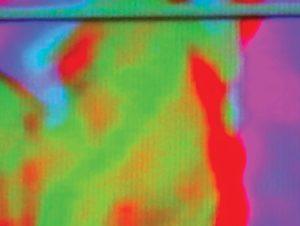
The Evanescent (2017)
5:12 mins
Ivetta Sun-young Kang (South Korea/Canada)
What you initially see is not what you remember. Shapes start to vibrate. Borders of figures begin to mingle with surroundings. Colours lose their originality. Your present begins to draw a perceptual frame out of what you physically experience. You’re becoming the interior of the frame, giving it a new phenomenon. The Evanescent was created through visual superimpositions and improvisatory performance that retransform its initial footage into the innermost imaginative one.
Ivetta Sun-young Kang is an interdisciplinary visual artist and writer, currently based in Montréal, Canada. She is interested in expanded cinema, video art, video sculpture and A/V performance, extended with philosophical and phenomenological inquiries. She studied Film Making in South Korea and has received her MFA, Studio Arts, at Concordia University in Montréal. Ivetta is a founding member of an artist collective called Quite Ourselves and the A/V duo CCVX?, along with Eric Dong Ho You. Her films/videos and installations have been exhibited at various festivals and galleries in the USA, Canada, France, South Korea, India Italy and now Malaysia.
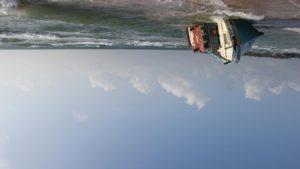
Last Syllable of Time (2012)
3:40 mins
Pavitra Wickramasinghe (Sri Lanka/Canada)
The capsized boat was found by chance on the north east coast of Sri Lanka. It was my second visit to the country where I grew up in twenty years. While I had clear memories of where I’m from, it is of course very different from reality and I was moved to see it with the eyes of an adult. The overturned boat is a reminder of the destructions of a recent past — a world left upside down.
Pavitra Wickramasinghe is a multidisciplinary artist mainly concerned with new ways of conceptualizing the moving image and conventions of seeing. Her current work is an exploration of notions of traveling, fluidity of place and memory. She uses light and shadows as extensions of the projected image to create installations where the viewer occupies filmic space instead of being physically removed from the work. She has exhibited her work in Canada, France, Germany, South Korea, Finland and Spain. She is a recipient of numerous residencies, awards and grants including, Art Omi (New York), La Chambre Blanche (Québec), Pépinières Européennes pour jeunes artistes, (Spain), UNESCO-Aschberg Bursaries for Artists Programme, Changdong Art Studio, National Museum of Contemporary Art (South Korea), Canada Council for the Arts and The Claudine and Stephen Bronfman Fellowship in Contemporary Art (Canada).
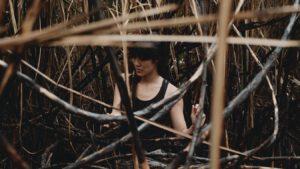
Inner Smoke (2016)
11:40 mins
Kim Sanh Châu & Ray Lavers (Vietnam/France/Canada)
Shot in Vietnam. Produced in Canada. In Hoa Binh, a rural area in Northern Vietnam, large expanses of white smoke can be observed every day. Whether at roadsides, in fields, or even backyards, local light fires every night around 5 p.m. Whether fire is lit in the idea of cleaning, purifying or honouring the deceased, this omnipresent phenomenon becomes obsessive. Inner Smoke is a dance-embodiement of the fire and smoke process, following the Vietnamese cult of the dead culture. Inner Smoke was awarded with the Best Direction 2017 by the Cinemathèque Québécoise and Quartiers Danses.
Kim-Sanh Châu is a choreographer, dancer and curator based in Montréal, born in France and originally from Vietnam. Trained in dance at UQAM, she also holds a master degree in finance. Her work has been presented in Canada, Vietnam and Malaysia.
Born and raised in Prince Edward Island (Canada), Ray Lavers graduated from Concordia University (Montréal) in Film Production (BFA) in 2012. He now works as director and cinematographer. Kim-Sanh and Ray have been collaborating on screendance projects since 2015. Their constant research is based on creating a space which doesn’t belong to the stage, neither the screen. Together, they have benefitted from creation residencies at Muong Studio (Vietnam 2016) and Videomovimiento (Colombia 2016). Their work has been presented at Rencontres Internationales Hybrides, festival Quartiers Danses, TanzFilmFestival, Espressioni, Krossing-Over, and Videmovimiento.

Khosro Berahmandi is the artistic director of the Festival Accès Asie, a multidisciplinary art festival which takes place annually in Montréal in order to celebrate Asian Heritage Month. The festival presents, promotes and disseminates the work of Asian-Canadian artists. Born in Iran, Khosro lives in Montréal.
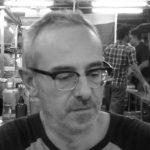
Fabrizio Gilardino is an independent curator and graphic artist who divides his time between Canada, Italy and South-East Asia. He has been curating programmes for a variety of festivals — including Kuala Lumpur’s KLEX festival and AWAS! (A Weekend of Animation Shorts), SEA Shorts Festival (George Town, Penang), Image Forum Festival (Tokyo), In Video (Milan) — and art spaces — RAW Art Space (Kuala Lumpur), Meta House (Phnom Penh), Speedy Grandma (Bangkok), la lumière collective (Montréal), Studio Guerra (Milan).
